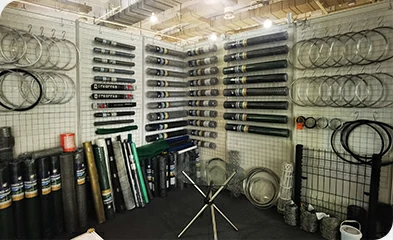 TEL:
+86-13102802206
TEL:
+86-13102802206
 Email:
fencenetting@china.com
Email:
fencenetting@china.com
 Language
Language
 TEL:
+86-13102802206
TEL:
+86-13102802206
 Email:
fencenetting@china.com
Email:
fencenetting@china.com
 Language
Language


The Beauty and Challenge of Mesh Rock Walls
When we think of rock walls, the imagery that often comes to mind is of craggy surfaces jutting out into the sky, surrounded by lush greenery, or perhaps stark desert landscapes. However, the concept of mesh rock walls combines both aesthetics and functionality, providing an innovative solution for various engineering challenges while also enhancing the natural environment.
Definition and Design
Mesh rock walls are constructed using a framework of steel mesh that envelops rocks. This mesh not only supports the weight of the rocks but also promotes stability and prevents erosion. The design is particularly beneficial in areas prone to landslides or soil erosion, where traditional retaining walls may fail to hold back the earth. The flexibility afforded by mesh allows engineers to adapt the structure to fit the specific contours and needs of the landscape.
Moreover, the mesh provides a green solution, as it encourages plant growth. Over time, vegetation can intertwine with the rocks, creating a natural facade that blends beautifully into the environment. This eco-friendly aspect makes mesh rock walls a preferred choice for developers looking to minimize their environmental footprint.
Applications
One of the primary applications of mesh rock walls is in civil engineering, particularly for road construction and landscaping projects
. These structures offer improved stability for slopes, reducing the risk of landslides that can threaten infrastructure and safety. Their ability to integrate seamlessly with natural surroundings makes them a popular choice in scenic areas where aesthetic considerations are paramount.In addition to engineering applications, mesh rock walls are also employed in agricultural settings. They can be used to create terraced landscapes, allowing farmers to cultivate on slopes that would otherwise be unusable. This effectively increases arable land and, in conjunction with proper vegetation, helps maintain soil health by preventing erosion and promoting water retention.

Challenges and Considerations
Despite their many benefits, constructing mesh rock walls does present certain challenges. The selection of appropriate materials is crucial; the steel mesh must be durable enough to withstand harsh environmental conditions without corrosion. Furthermore, properly placing and compacting the rocks within the mesh is vital for ensuring the wall’s stability and durability.
Another challenge lies in the design phase, which requires careful consideration of local geology, hydrology, and climate. Engineers must assess the area to determine the best approach, as improper installation can lead to structural failures. Regular maintenance is also essential to ensure the integrity of the wall over time, especially in areas subject to heavy rainfall or seismic activity.
Sustainability and Environmental Impact
One of the most appealing aspects of mesh rock walls is their sustainability. In contrast to traditional concrete solutions, which can be disruptive and resource-intensive, mesh rock walls rely on locally sourced materials, reducing transportation costs and emissions. They also promote biodiversity by providing habitats for various plant and animal species.
Over time, as vegetation grows and establishes in the mesh, these walls can contribute to improved air quality, enhanced aesthetics, and increased wildlife corridors. The introduction of green space in urban areas is becoming increasingly vital, as cities look for ways to combat urban heat, improve mental well-being, and enhance community engagement.
Conclusion
In conclusion, mesh rock walls represent a remarkable fusion of engineering prowess and environmental sensibility. They address key issues like erosion, land stability, and aesthetic value while presenting sustainable alternatives to traditional wall structures. As we face the ongoing challenges of climate change and urbanization, the innovative use of mesh rock walls will undoubtedly play a significant role in shaping resilient landscapes. By harnessing the power of nature and engineering expertise, we can create structures that enhance our natural environment while safeguarding our infrastructure for future generations.